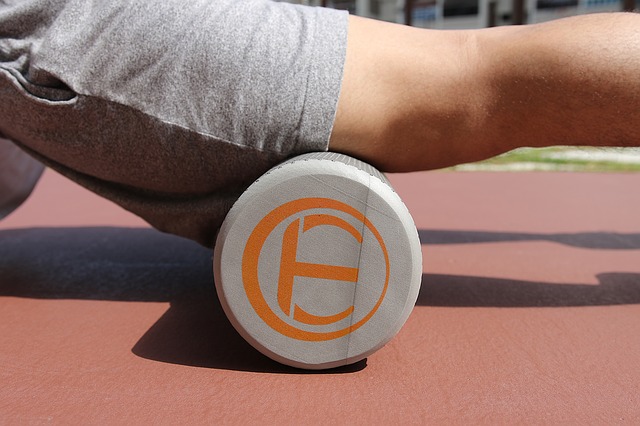This post may contain affiliate links. Please read the disclaimer for more info.
For some odd reason, the practices of trigger point therapy, myofascial release, or deep massage (whichever you prefer) are all typically overlooked to resolve plantar fasciitis (PF). Maybe its because the experts we look to rarely recommend it because it’s too “woo-woo” for them.
But the point is, people seem to want the answer to be these ridiculous exercises like toe touches or foot crunches which are repetitive, boring, and not productive.
I’ve said it before and I’ll keep saying it, the pain you feel in your arch or heel is the result of a problem elsewhere. It’s just a symptom. There are several possible causes of PF but to put it bluntly, you don’t have heel pain because you have a bad heel.
You have it because your foot pronates too much. Your foot might overpronate for a couple different reasons. But it’s important to look around the point of pain to identify parts that are too tight or misaligned or both.
In this post, I’m going to give you 5 muscles that when massaged or released, will guaranteed improve your condition or maybe even solve it altogether. A few of these have been crucial to my recovery, specifically loosening up muscles so I would stop pronating so much and be in less pain.
For these trigger point releases, you are going to need good tools to apply specific pressure to your muscle tissue and fascia. A standard foam roller will do for the larger muscles (don’t worry about it having ridges, it’s more effective to use something smaller to focus the pressure accurately on smaller spaces). For the smaller to medium-sized muscles, I would recommend a firm massage ball. For general pain relief and a rewarding way to end a release session, a foot massage roller is really nice to have.
The first 3 muscles all reside in similar areas of the leg and they all have or contribute to about the same functions as one another so I’m going to summarize their functions in this paragraph and talk more specifically about their location below.
The soleus, posterior tibialis, and gastrocnemius muscles are three of the biggest muscles in the lower leg and they control the ankle. When we are looking to mobilize our ankles and feet, it’s important to look at the mobility of the main drivers of these areas.
If these 3 muscles do not have full range of motion (aka are too tight), you cannot possibly have full range of motion in your ankles either, which is a huge problem when you’re dealing with PF.
These muscles also are what give your feet arch support. So again, when they become too tight, your ankles and feet will suffer as we tend to operate with an open-foot position, leading to the ankles collapsing in.
For the sake of simplicity, work your way through all the calf muscle you have by seeking out those tenders spots that hurt when you are rolling them out or releasing them.
Start in specific regions like the soleus (below the gastrocnemius and all around the achilles tendon) and then move into areas like along the shinbone or on the outside of the bigger calf muscles. These are all areas where I found a lot of success and was able to release some significant tension.
Source: mountainpeakfitness.com
Soleus
This is a muscle in the back of the lower leg that runs from just below the knee to the heel. For the purposes of releasing this area, we’ll be focusing on the lower part of it (just above the visible achilles tendon but below the big calf muscle).
Posterior Tibialis
This muscle runs down through the inside of the foot and has a huge job in being the key stabilizing muscle of the lower leg.
Gastrocnemius
This is your big calf muscle that makes up the ball shape of your calf.
Hamstring
For the hamstring release, I’ve included a video made by Elisha from mobilitymastery.com. She put together a very simple and easy to follow release technique video that explains everything you need to know but if you’d like to read her full article, click here.



Leave a Reply